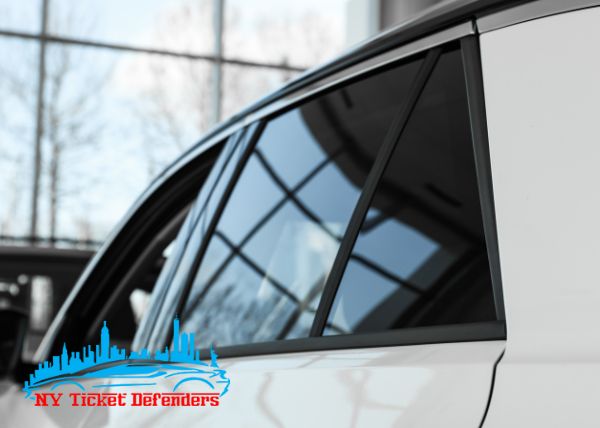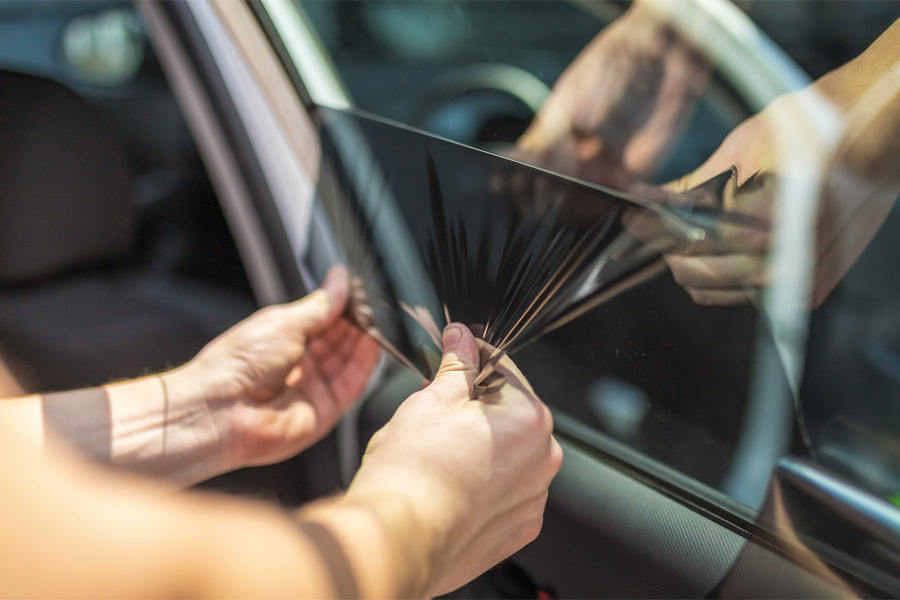Custom Vehicle Window Tinting Solutions for a Smooth and Trendy Look
Custom Vehicle Window Tinting Solutions for a Smooth and Trendy Look
Blog Article
Home Window Tinting Laws and Standards: What You Required to Know Before Tinting Your Automobile
Before waging window tinting for your lorry, it is important to familiarize yourself with the diverse laws and standards that govern this technique across various states. These policies dictate the permitted levels of tint darkness, usually measured by visible light transmission (VLT) portions, and consist of particular specifications for front windscreens focused on making certain road security. Additionally, specific jurisdictions might offer clinical exemptions for individuals with certifying conditions. Understanding these complexities can conserve you from possible legal implications, yet what are the specific guidelines in your state?
Summary of Home Window Tinting Rules
Window tinting laws are often subject to variant throughout different jurisdictions, showing regional guidelines and security considerations. These legislations dictate the permissible levels of tint darkness and reflectiveness on car windows, ensuring that vehicle drivers keep sufficient visibility while additionally shielding versus unsafe UV rays and warmth.
The majority of guidelines categorize window tinting based upon the Visible Light Transmission (VLT) percent, which indicates the quantity of light that can travel through the home window. Typically, reduced VLT percents represent darker tints. Regulations usually separate in between the front, side, and back windows, with more stringent limitations related to the front windscreen to improve safety for both the vehicle driver and other roadway users.
Furthermore, some territories impose limitations on the reflectivity of the tint, protecting against extreme glare that can harm visibility. Exceptions to these regulations may exist for people with certain clinical problems requiring extra sunlight protection. Conformity with window tinting laws is vital, as violations can lead to fines, compulsory removal of the color, and potential boosts in insurance premiums. As a result, it is essential for automobile owners to familiarize themselves with local legislations before waging window tinting installments.
State-by-State Color Regulations
Understanding the particular window tinting guidelines in each state is crucial for vehicle proprietors looking for to adhere to the legislation. Each state in the U.S. has established its own set of regulations governing home window tinting, which can vary dramatically. These policies typically determine the permitted levels of color darkness, the kinds of home windows that can be tinted, and any kind of medical exemptions that might use.
As an example, states like California have strict restrictions on color darkness for front windows, while others, such as New Mexico, might allow darker tints. Additionally, specific states mandate details visibility portions for different windows, consisting of the windscreen, front side windows, and back windows. It is vital for automobile owners to acquaint themselves with their state's legislations to prevent prospective fines or charges.
Moreover, some states may need an accreditation sticker label to be positioned on colored windows, showing conformity with state legislations. Failing to abide by these regulations not just takes the chance of lawful effects yet can additionally affect security and presence while driving. Automobile proprietors should perform thorough research study or get in touch with neighborhood authorities to ensure complete understanding and compliance with state-by-state color regulations.
Allowed Tint Levels and Kinds
Lots of lorry owners may be stunned to discover that permitted tint levels and kinds vary commonly throughout various states. Each state has actually developed its own policies concerning the permissible darkness and reflectivity of home window tint, typically determined by Visible Light Transmission (VLT) percentages. VLT describes the quantity of light that can pass through the tinted windows; thus, a you could try here reduced percentage suggests a darker color.

In addition, the kinds of tint materials allowed can differ, with some states restricting mirror-like or metal finishes. It is crucial for automobile proprietors to acquaint themselves with their state's particular regulations to make certain compliance. Non-compliance can lead to penalties, compulsory removal of the tint, or other lawful effects, making it necessary to comprehend these laws before waging installment.
Medical Exceptions for Tinting
While not all states offer allocations for medical exemptions concerning home window tinting, those that do identify the need for particular people to improve presence and convenience due to clinical problems. Numerous medical conditions, such as lupus, skin cancer, and certain eye conditions, can provide individuals particularly delicate to sunlight. As a result, these individuals might need darker tints to protect themselves from dangerous UV rays and glow.

It is necessary to keep in mind that despite having a clinical exemption, there may still be limitations on the level of tint enabled. Compliance with state regulations guarantees that people are both protected and within lawful restrictions. Those considering clinical exceptions ought to call their neighborhood Division of Motor Vehicles or comparable authority to understand the requirements and procedures needed to make an application for an exception efficiently.
Fines for Non-Compliance
Stopping working to conform with window tinting laws can lead to considerable penalties, Extra resources which differ by state. Legislation enforcement companies are empowered to provide citations for automobiles that do not adhere to the defined tinting laws. These penalties normally include fines, which can range from moderate total up to numerous hundred bucks, relying on the extent of the offense and the state in question.
In some jurisdictions, repeated offenses might result in intensifying fines or additional penalties, such as mandatory court looks. Non-compliance might demand the elimination of illegal tinting, usually at the proprietor's expense. In extreme instances, habitual transgressors may deal with suspension of their vehicle registration until conformity is accomplished.
Furthermore, insurance coverage ramifications might occur from receiving multiple citations for window color infractions. Insurance providers might watch such infractions as an indicator of riskier behavior, potentially resulting in increased costs or problem in coverage.
To prevent these charges, it is essential for car owners to acquaint themselves with their neighborhood window tinting legislations and guarantee that their car complies (Window Tinting). This aggressive strategy not just avoids legal ramifications however likewise promotes roadway security
Final Thought
The majority of guidelines categorize home window tinting based on the Visible Light Transmission (VLT) percent, which indicates the amount of blog here light that can pass through the home window. Conformity with home window tinting regulations is essential, as offenses can result in fines, obligatory elimination of the color, and prospective increases in insurance coverage costs.Comprehending the certain home window tinting guidelines in each state is important for car proprietors seeking to abide with the law. These policies typically dictate the allowed levels of color darkness, the types of windows that can be tinted, and any kind of medical exceptions that might use.
For circumstances, states like The golden state have strict restrictions on tint darkness for front home windows, while others, such as New Mexico, may permit darker tints.
Report this page